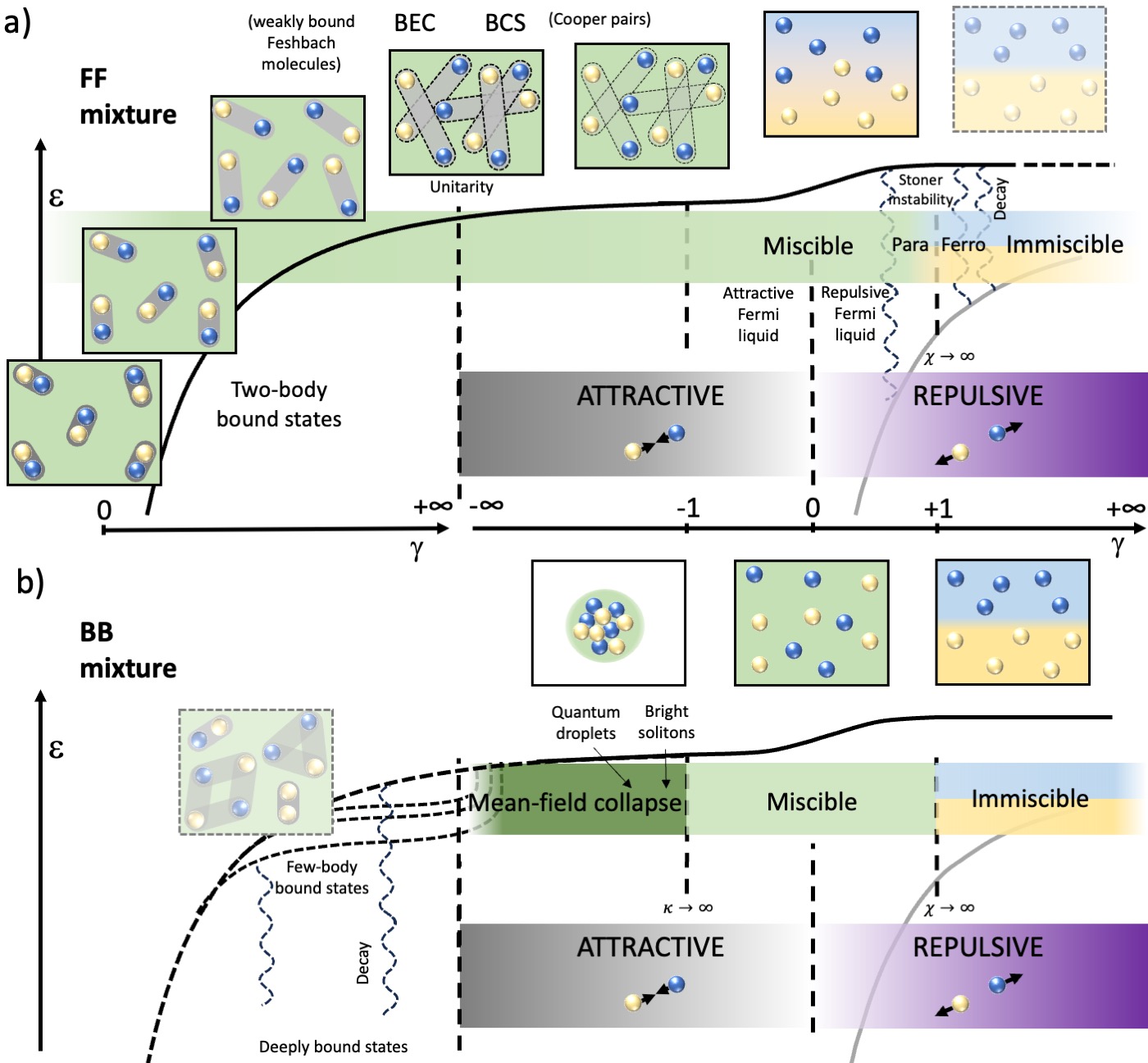 |
After decades of improvements in cooling techniques of several atomic species and in finding methods to achieve stable quantum mixtures, the field is now ready for an extensive use of such versatile platforms to investigate various physical problems. Relevant examples are the dynamics of impurities in a quantum gas, the miscibility condition of different gases, the study of exotic topological structures, the interplay between magnetism and superfluidity, the formation of artificial molecules or new few-body states. In this review we illustrate the differences among possible quantum mixtures — whether homonuclear spin mixtures or heteronuclear ones — and show how they can be exploited to investigate a plethora of topics from the few-body to the many-body regime. In particular, we discuss quantum mixtures of ultracold gases under three different perspectives: systems made of a few atoms of different kinds, single impurities within a host gas and quantum mixtures of two interacting gases. C. Baroni et al. |


Mass imbalanced fermions are great! In the CrLi lab we produce novel ultracold mixtures composed by Lithium and Chromium fermionic atoms. At the Cr-Li mass ratio exotic trimer states exist, which in turn will allow the first resonant control of elastic three-body interactions. This opens new perspectives for the study of elusive superfluid and magnetic phases with ultracold fermions.
